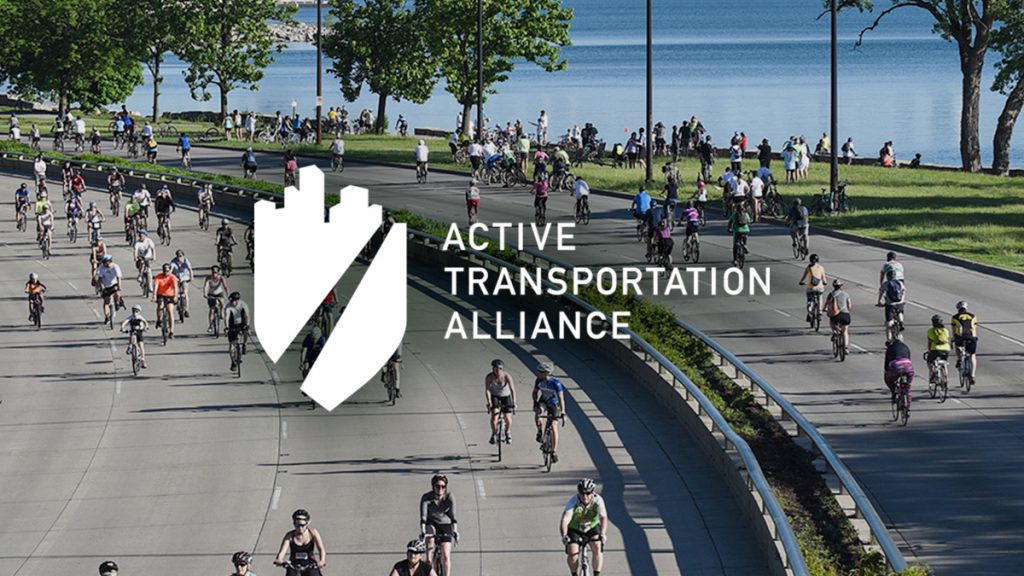Long-time Southland reporter Carmen Greco wrote a nice piece about a Complete Streets plan for 159th Street today.
In the article, Homer Glen's community development director Ed Cage claims that Complete Streets will be easier in – wait for it – Homer Glen because their streets are going to be widened by IDOT soon. Greco quotes HNTB's Diane Gormley-Barnes (maybe a bit out of context, as her transportation planning & design firm has written in some great ideas for each community) as saying that Complete Streets are more challenging where the town is already "built out," such as Orland Park, Tinley Park, Oak Forest, Markham.
I'm of two minds here:
Mind one – Homer Glen is tabula rasa, a township building a town. They can go in any direction. And they are capitalizing on the chance given to them to learn from 159th Street to their east, with it's dangerous, acre-wide intersections, spotty & substandard sidewalks, business entrances that have spread like kudzu, and eye-sore streetscapes. Homer Glen continues to boom, and they are going to build new and wider roads no matter what. So thank god they're thinking about bikes, peds, and pretty things.
Mind two – Complete Streets is open to infection by suburban notions of bicycling and walking facilities, and its viability might be in danger.
The quotes Greco uses from Cage and Gormly-Barnes host two potential contagions:
1) Complete Streets works best on newly widened or newly built roads in developing areas;
2) Complete Streets is about street side amenities and bike paths.
I just came through two epic phone conferences involving the Northwest Indiana Regional Planning Commission and NW Indiana's planners and engineers as we hammered out a Complete Streets policy for that region's federally funded road projects. These two infectious ideas – that Complete Streets means expensive street expansion projects, and that Complete Streets mandates bike paths along every road – threatened to submarine the discussion as municipal staff and the Indiana Dept. of Transportation warned that the policy would suck dry the transportation funding available. The compromises made reflect NIRPC's and other advocates efforts to save the patient.
Those same ideas surfacing on this side of the border trouble me. Most of the Southland can be characterized as "built up." And in the most built-up communities along this corridor – Oak Forest, Markham, Harvey, South Holland – is where you find the most people dependent on walking, biking, and transit. These communities should be the flagship communities for Complete Streets, where the solutions re-envision and re-prioritize what happens in that existing curb-to-curb space and available funding. You have money to only repave? Look at lane widths. Look at lane counts. Look at crosswalks. Look at painted medians. No matter how wide that road is, or how old it is, a Complete Streets perspective obligates every inch of it to accommodate every user – bikes, peds, cars, buses, semi-trucks, to its fullest ability, given any and all physical and financial constraints. Its best and most cost-effective application is on streets where the street is all you have.
But a contaminated view of Complete Streets is percolating in our suburban region, right where I think the policy can be the most transformative and the needs are greatest. It threatens to skew the region's Complete Streets priorities towards the new instead of towards what's needed. And I'm afraid it will infect IDOT, who will be like the kid who jumps in front of the sneeze to avoid next week's test. I'm afraid we'll get wonderful, beautiful streets through Homer Glen without getting inexpensive, life saving, quality-of-life improving pedestrian treatments in Markham.
The best defense is inoculation, with a swine flu-like sense of urgency. We need to inject folks with the notion that Complete Streets simply divides the money and space you have more equitably and more efficiently. Every resident, town official, public works director, municipal planner and engineer in every suburban town needs to know that to immunize them against the idea that funding and right of way considerations can exclude them from safer, more pleasant streets and road crossings.
Fortunately, this idea has viral characteristics of its own. Start an epidemic of sound street design: completestreets.org is a great place to get started. And the 159th Corridor Plan is avaliable here: http://gis.orland-park.il.us/159th-Street/

